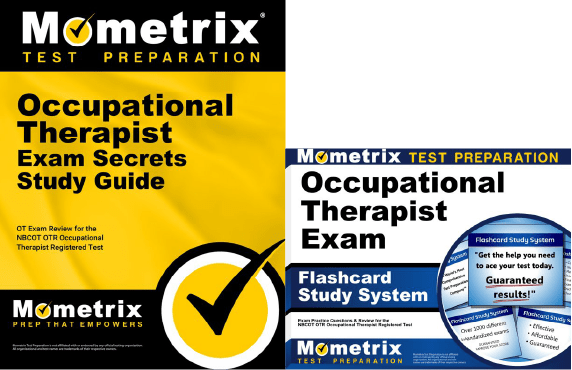If you need help studying for the NBCOT Occupational Therapist (OTR) exam or just want some more information about what the test is like, you’ve come to the right place.
Click below to take a free Occupational Therapist practice test!
Exam Eligibility
Before you can register to take the Occupational Therapist exam, you’ll have to obtain an OT degree from an ACOTE-accredited program.
Once you’ve done that, you’re set to begin the registration process!
What’s on the Exam?
First, let’s talk about the questions on the exam. There are 180 multiple-choice questions total, but only some of the questions count toward your score. Why is that?
The unscored questions on the exam are called “field-test” questions. These are added to the exam to determine if they’re good enough questions to add to future versions of the test.
The trick is that you won’t have any way of knowing which questions are scored and which ones are field-test. They will appear just like the scored questions throughout the test.
The time limit for the exam is 4 hours. There aren’t any scheduled breaks, but you’re free to take restroom breaks as needed.
Let’s take a closer look at the different sections of the OTR exam.
1. Evaluation and Assessment
23% of the exam
- Identifying the various factors that influence occupational performance
- Assessing a client’s functional skills, roles, needs, wants, and performance context
- Determining the influence of context, task demands, performance skills, and current conditions on occupation
2. Analysis, Interpretation, and Planning
23% of the exam
- Synthesizing assessment results to determine eligibility for services
- Establishing a client-centered intervention plan
- Collaborating with the client, OT colleagues, and other professionals
- Monitoring and modifying the intervention plan, approach, goals, and context using clinical reasoning
3. Select and Manage Interventions
38% of the exam
- Incorporating preparatory techniques, activities, and modalities to promote healing and enhance engagement
- Strategies that support participation in ADL, IADL, health management, rest and sleep, work, play, education, and social participation
- Interventions for improving sensory, motor, neurological, and physiological status
- Selecting, fabricating, and modifying orthotic devices
- Providing training in using orthotic and prosthetic devices
- Selecting assistive technology options, adaptive devices, mobility aids, and other medical equipment
- Recommending environmental modifications to support participation in occupation
4. Competency and Practice Management
16% of the exam
- Providing safe, effective, and efficient services related to populations, groups, and individuals
- Incorporating risk management techniques to protect from injury or harm
- Providing OT services to protect consumers and meet reimbursement requirements
- Engaging in professional development and competency assessment activities
How to Register
Once you’ve ensured that you meet the eligibility requirements, you can register for the exam.
To get started, you’ll need to submit an application on NBCOT’s website. The application will ask you for your contact information and any documentation to prove your eligibility (among other things).
When you submit the application, you’ll also need to submit the application fee, which is $540.
Once your application is approved, you’ll be able to register for the exam and schedule a testing appointment.
Exam Scores
The test is scored using a scaled scoring method. Here’s how it works:
For every question you answer correctly, you get one point added to your raw score. At the end of the test, your final raw score will be converted to a scaled score. This scaled score will range somewhere between 300 and 600.
The reason your raw score is converted to a scaled score is because everyone who takes the test is given a slightly different set of questions. Since everyone has a different arrangement of questions, and because some questions are harder than others, converting your raw score to a scaled score ensures a more even playing field.
Retaking the Exam
If you didn’t get a passing score on your first try, that’s okay! You can retake the test after a 30-day waiting period.
Keep in mind that you will have to pay the full $430 re-testing fee every time you retake the test.
FAQs
How many questions are on the OTR exam?
The exam contains 180 questions.
What is the time limit for the OTR exam?
The exam is timed at 4 hours.
What is the passing score for the OTR exam?
You’ll need to get a final scaled score of at least 450 to pass.
How much does the OTR exam cost?
The application fee is $540.



 OTR Study Guide
OTR Study Guide OTR Flashcards
OTR Flashcards